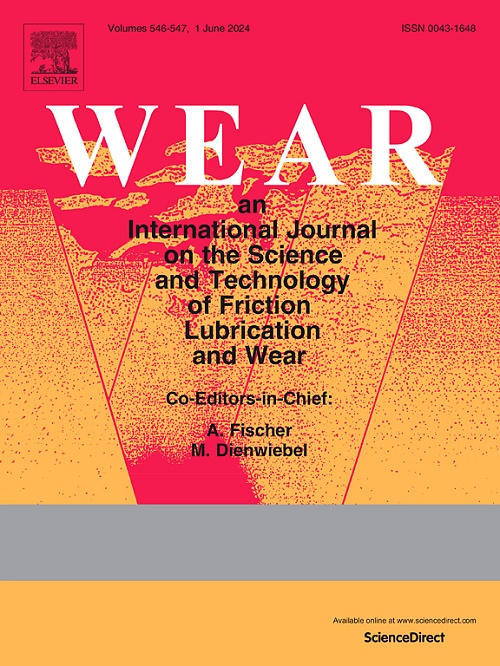Particulate matter emissions from brake pads: A comparative study of low-steel and non-asbestos organic materials
IF 5.3
1区 工程技术
Q1 ENGINEERING, MECHANICAL
引用次数: 0
Abstract
This study investigates the particulate matter (PM) emissions generated from the wear of four different commercial brake pads (two Low-Steel and two Non-Asbestos Organic). Brake materials were tested by means of the AK Master test procedure, and emitted brake wear PM was collected by means of a Dekati Low-Pressure Impactor. For each tested pad, the 13 samples collected at each impactor stage during three sections of the test were weighted and then subjected to acidic digestion and ICP-OES and ICP-MS elemental analysis; a suite of 56 elements was analysed. The analysis revealed distinct differences in emission profiles based on both pad composition and braking intensity. Low-Steel pads emitted more PM10 and PM2.5 under mild braking conditions, while Non-Asbestos Organic pads emitted higher levels of PM0.1 during intense braking. The size distribution of PM emissions shifted from unimodal to bimodal as severe braking events increased, with fine and ultrafine particles becoming more prominent. Principal Component Analysis (PCA) was applied to identify chemical composition differences between the brake pads. Low-Steel pads emitted iron-rich particles due to the ferrous materials in their composition, while Non-Asbestos Organic pads emitted particles rich in non-ferrous metals such as barium and titanium. Additionally, driving style had a strong influence on both the quantity and size distribution of the emitted PM. Frequent, intense braking events led to a significant increase in the total quantity of PM and a higher proportion of fine and ultrafine particles. The findings highlight the importance of material composition and braking behaviour in mitigating brake wear emissions, which are projected to become the dominant source of traffic-related air pollution in the future.
来自刹车片的微粒物质排放:低钢和非石棉有机材料的比较研究
本研究调查了四种不同的商用刹车片(两种低钢刹车片和两种无石棉有机刹车片)磨损产生的颗粒物(PM)排放。采用AK Master测试程序对制动材料进行了测试,并采用Dekati低压冲击器收集了排放的制动磨损PM。对于每个测试垫,在三个测试段的每个冲击阶段收集的13个样品进行称重,然后进行酸性消化和ICP-OES和ICP-MS元素分析;一组56个元素被分析。分析显示,基于衬垫成分和制动强度的排放曲线存在明显差异。低钢衬垫在轻度制动条件下排放更多的PM10和PM2.5,而非石棉有机衬垫在剧烈制动条件下排放更高的PM0.1。随着严重制动事件的增加,PM排放的尺寸分布由单峰型向双峰型转变,细颗粒物和超细颗粒物更加突出。采用主成分分析法(PCA)对不同刹车片的化学成分进行了分析。低钢衬垫由于其成分中含铁材料而释放出富铁颗粒,而非石棉有机衬垫则释放出富含钡和钛等有色金属的颗粒。此外,驾驶方式对PM排放的数量和大小分布都有很大的影响。频繁、剧烈的制动事件导致PM总量显著增加,细颗粒和超细颗粒的比例更高。研究结果强调了材料成分和制动性能在减轻制动磨损排放方面的重要性,预计制动磨损排放将成为未来交通相关空气污染的主要来源。
本文章由计算机程序翻译,如有差异,请以英文原文为准。
求助全文
约1分钟内获得全文
求助全文
来源期刊

Wear
工程技术-材料科学:综合
CiteScore
8.80
自引率
8.00%
发文量
280
审稿时长
47 days
期刊介绍:
Wear journal is dedicated to the advancement of basic and applied knowledge concerning the nature of wear of materials. Broadly, topics of interest range from development of fundamental understanding of the mechanisms of wear to innovative solutions to practical engineering problems. Authors of experimental studies are expected to comment on the repeatability of the data, and whenever possible, conduct multiple measurements under similar testing conditions. Further, Wear embraces the highest standards of professional ethics, and the detection of matching content, either in written or graphical form, from other publications by the current authors or by others, may result in rejection.
 求助内容:
求助内容: 应助结果提醒方式:
应助结果提醒方式:


